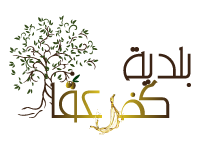In the beginning of the Mamluk era, Kafaraka turned into a deserted area inhabited by a small number of peasants who survived the massacre. According to Ibn Shaddad, the Sultan Qalwoun spared some of the villagers, in order to carry out the work of agriculture.
Unlike the demographic change that took place in Tripoli in the Mamluk era, the rural Orthodox areas in koura were not influenced. These areas became the source of vegetables and oil for the city.
Because of “ Shourout Al OUMRIA” law imposed by the Mamluk, the Christians could not rebuild what was destroyed during the war. In addition to that, religious obligations on the daily life style were imposed. Christian men were forced to wear blue turbans and were prevented from riding horses or mules, while women were obliged to wear blue linen.
Nature was not less harsh on our ancestors than the Mamluks. Locusts invaded the region in 1303, 1373, 1374, 1378, 1400, 1422, 1456, 1516 and 1519. A destructive earthquake hit the area in 1338, 1403 and 1412. Snow reached the coast in 1291 and 1301, 1316, 1345, 1359, 1397, 1407, 1508, and drought in 1312. The habitants suffered from plague in 1344, 1348, 1352, 1362, 1399, 1409, 1411, 1416, 1437, 1468, 1491 and 1511.
Between the oppression of the Mamluks and the cruelty of nature, our ancestors managed to survive.
